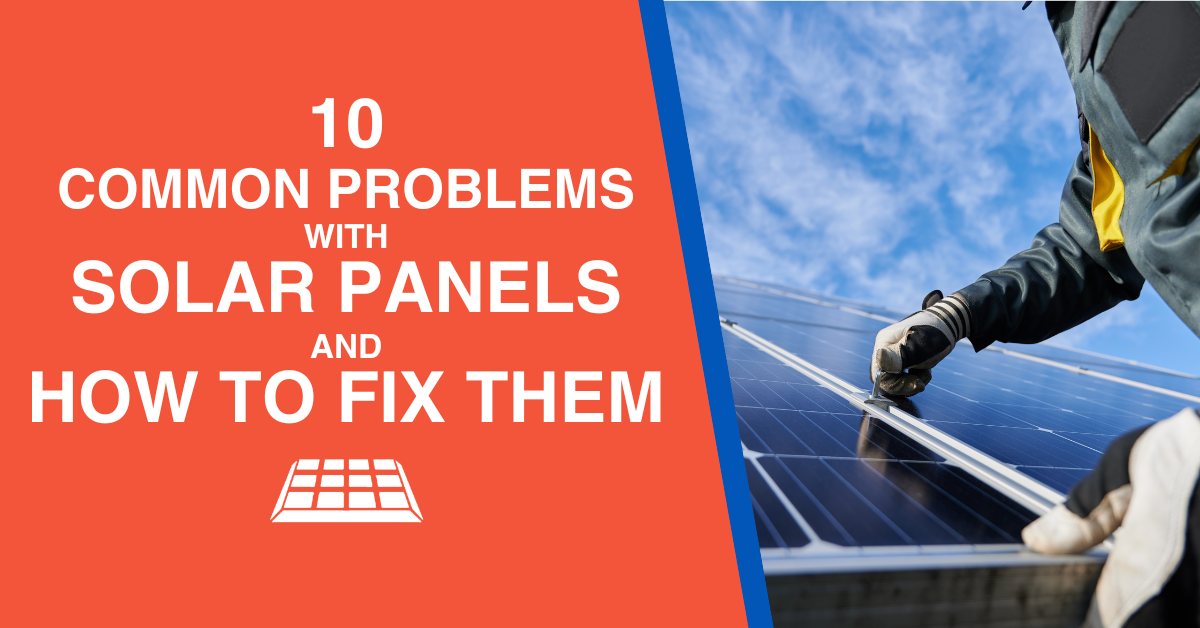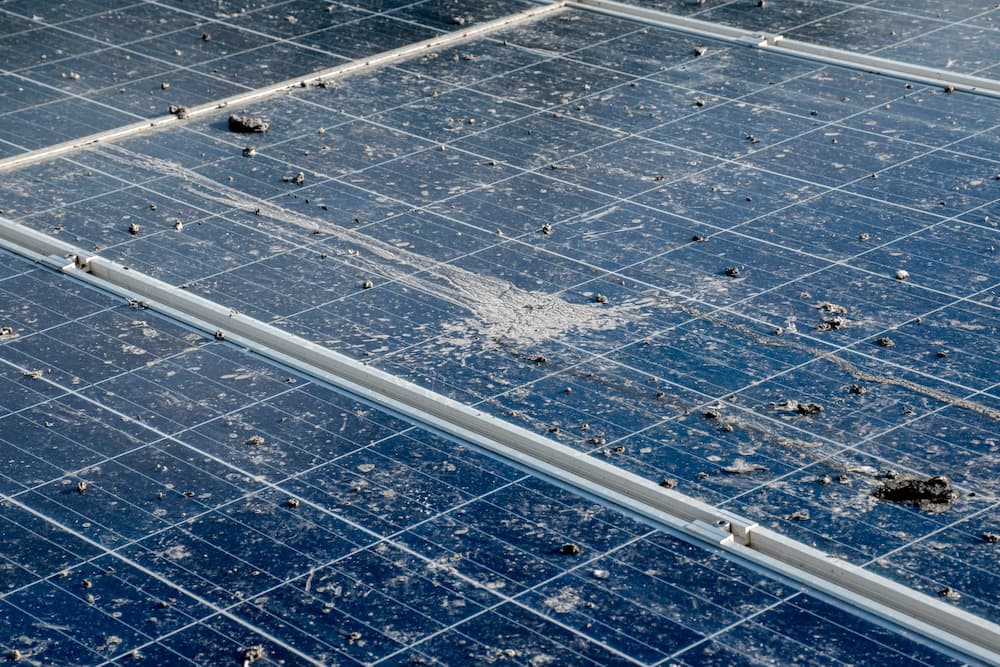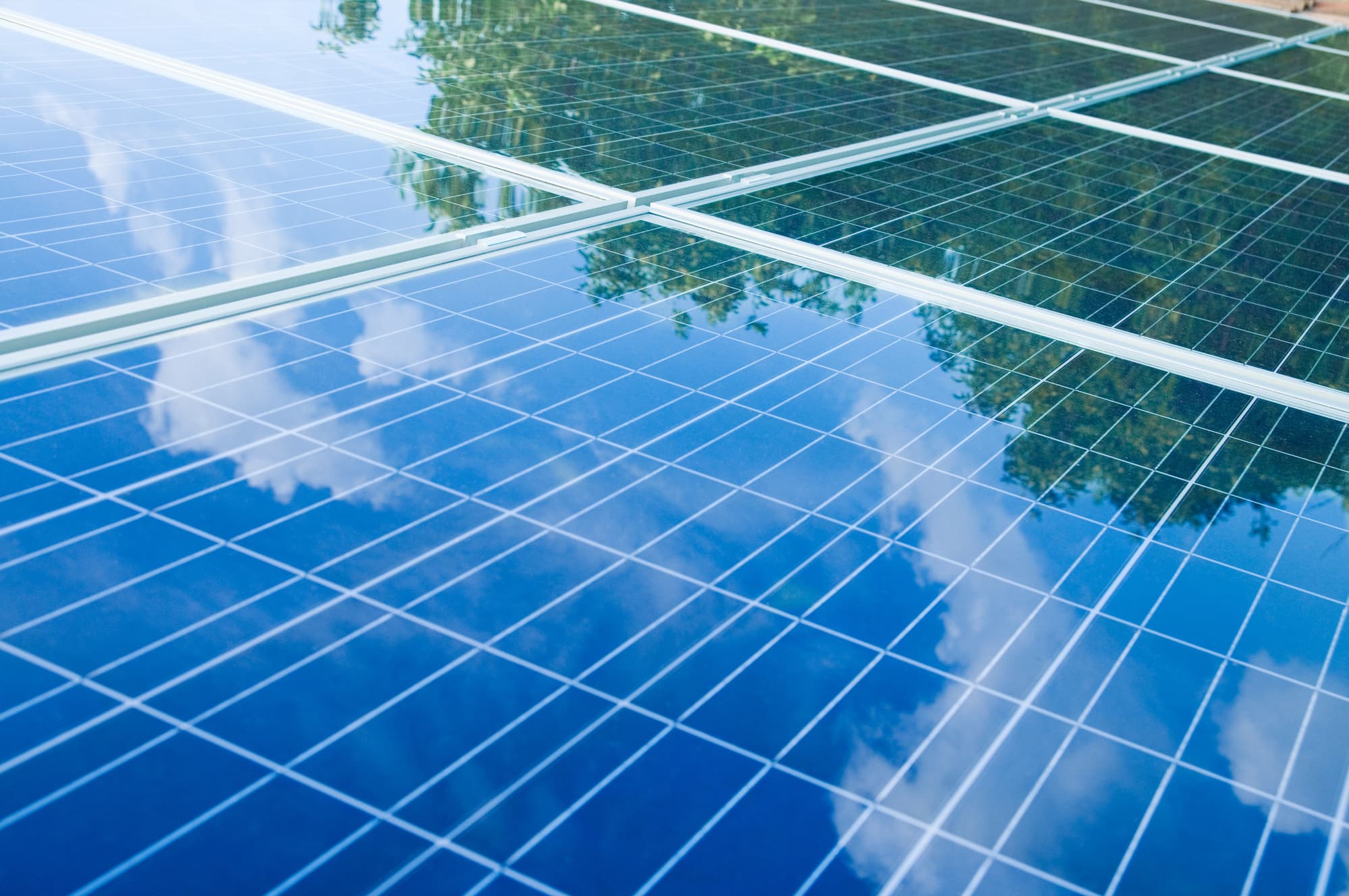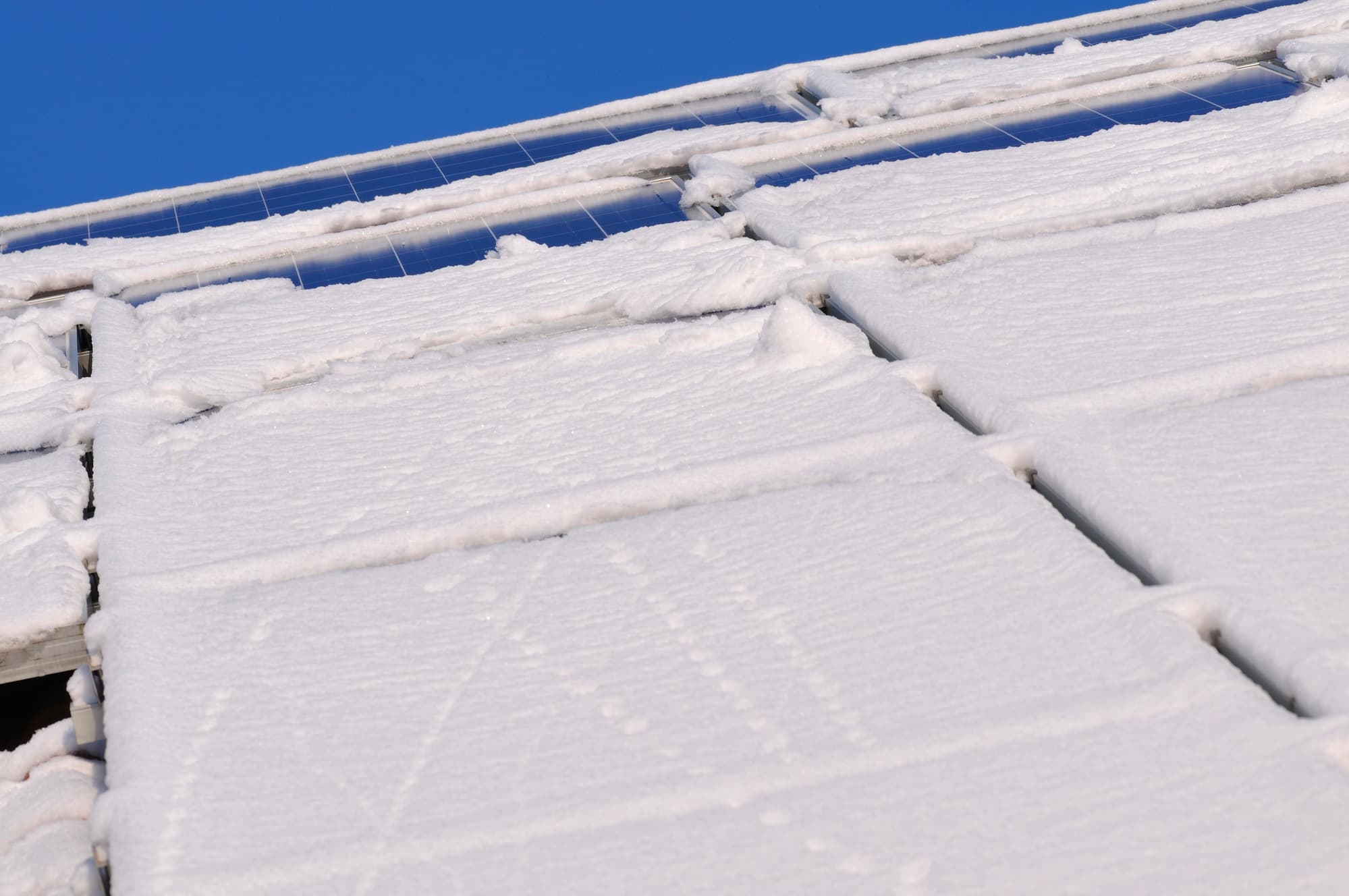
10 Common Problems with Solar Panels and How to Fix Them
From houses to cars: you wouldn’t expect to make a long-term investment and never bump into any kind of problems, right?
It’s the same with solar panels. They’re a valuable and sustainable choice that will last you for 25-30 years, but you’ll probably need to factor in some bumps in the road at some point.
So, here are the most common solar panel problems and – most importantly – how you can prevent or fix them.
Problem 1: Pigeons nesting under solar panels
Solar panels need a small gap underneath them to create enough airflow to cool them down. Unfortunately, with it being warm and sheltered, it’s also the perfect nesting place for pigeons.
Why is that a problem?
First of all, it can be dangerous. These vermin can cause fire hazards by bringing dry and combustible materials underneath your warm solar panels or by chewing and dislodging their wires.
The latter, combined with their corrosive droppings, means they can damage them, too. On top of that, these dirty droppings and nests can reduce the efficiency of your solar panels by up to 30%!
Don’t forget that these vermin can also be messy and carry diseases. Finally, as if that weren’t bad enough, trust us: it’s not pleasant to hear pigeons coo and scurry around when you’re trying to sleep.
How to fix it
Bird-proof your solar panels as soon as possible to avoid this problem altogether.
We’d never recommend dodgy or ineffective solutions like visual, auditory or chemical repellents, though.
Instead, the best option tends to be a mesh barrier because it protects your solar panels from pigeons. It’s also durable and won’t ruin your building’s aesthetic.
Alternatively, you can consider spikes for pigeons and large birds.
At PPSP, we can install the right bird-proofing solution for you. If you already have some animals nesting up there, we’ll also get rid of all their mess, debris and dead bodies.
Contact us to bird-proof your solar panels and prevent or fix this pesky problem.
Problem 2: Dirt and debris accumulation on solar panels
Over time, dust, leaves, dirt and other debris will accumulate on the surface of your solar panels.
That means they’ll absorb less sunlight. So, you’d basically waste energy and money.
How to fix it
Clean your solar panels regularly, at least once a year.
In most cases, water and a soft brush are enough, but if necessary, you can use mild soap or other non-abrasive cleaning solutions.
Either way, always consult your manufacturer’s guidelines first so as not to damage your panels or void their warranty.
For extra peace of mind and to spare yourself from that hassle, we’d recommend using a professional cleaning service instead (especially if your solar panels are in a hard-to-reach spot).
Problem 3: Shaded conditions and reduced sunlight
Is a section of your solar panels shaded from trees, a building or other manmade structures? If it doesn’t get enough sunlight, that means you’re missing out on your investment… and by quite a lot, too!
In fact, even if only 1% of your solar panel surface is in the shade, their overall efficiency can go down by 50-80%.
How to fix it
The safest method to avoid this solar panel problem is to be strategic with their placement before installing them (or even better: let a professional do it). That way, they’ll be in the very best spot and angle to get the most sunlight.
Alternatively, if it’s a new problem caused by an overgrown tree, you could prune those branches.
Unfortunately, for anything else, you might need to relocate your panels altogether.
Problem 4: Inverter malfunctions or failure on solar panels
The inverter is what converts your solar power from DC to AC electricity, which you can then use in your home.
Micro-inverters tend to last 15-25 years, but most models will fail after 10. So, realistically, you’ll need to replace your inverter at least once throughout the entire lifespan of your solar panels.
How to fix it
Regular checks and maintenance can help you spot inverter problems sooner rather than later.
For example, let’s say it stops working after a power outage. You can simply check if its switch is in the right position.
Is your inverter showing a red or yellow light? Then you should reboot it (following your manufacturer’s instructions, of course).
If nothing works, it means it needs to be fixed or replaced by a professional.
Problem 5: Micro-cracks on solar panels
It’s common for solar panels to develop micro-cracks due to physical stress (like hail) or thermal cycling (extreme temperature changes).
They’re invisible to the naked eye and potentially harmless at first, but they can get bigger and cause parts of your system to fail.
How to fix it
Unfortunately, you can’t always prevent these micro-cracks altogether. The best thing you can do is choose high-quality solar panels and get them installed professionally to reduce this risk.
You can also weather-proof your system (more on that soon) and ensure it has proper ventilation.
However, once a micro-crack has grown, the only solution is to replace that module.
Problem 6: Hot spots on solar panels
These dangerous hot spots are usually caused by shading. If even just one cell is shaded or faulty, other cells will have to make up for it and produce higher voltage.
This can lead to permanent damage to parts of your system!
How to fix it
Inspect and clean your solar panels regularly to remove debris or spot problems that could cause shading (like an overgrown tree branch right above a panel).
Unfortunately, once a hot spot has developed, you’ll need to change that module.
Problem 7: Potential induced degradation (PID)
PID is an annoying solar panel problem that reduces your system’s efficiency due to differences in voltage.
These can be caused by a range of factors – like high humidity and temperatures – but also the initial configuration of your solar panels, from grounding to cell types.
How to fix it
The best thing you can do to avoid this solar panel problem is choosing a PID-resistant system in the first place. It’s also important that all your grounding and electrical installations are carried out professionally.
You can invest in an anti-PID box, too: this will change the direction of your inverter’s electrical current, counteracting the negative effects caused by voltage differences.
Problem 8: Connectivity issues on solar panels
Faulty wiring or connections can also lead to big solar panel problems, from reduced efficiency to… a complete system failure!
As seen before, these are usually caused by birds but they can happen due to external damage or poor installation, too.
How to fix it
Choose a professional installation, and make sure your wiring is done by a certified electrician.
It’s also important to conduct regular electric checks. That way, if there are some connectivity issues, you’ll get to spot them and fix them before they escalate.
Problem 9: Weather damage on solar panels
Solar panels are designed to withstand the rain and weather for decades.
On the other hand, extreme conditions (like severe hailstorms or heavy snow) can end up causing annoying problems or even irreversible damage.
How to fix it
As always, a correct and professional installation is key. It’ll ensure that your solar panels are anchored and secure (for example, to withstand strong winds) and that they have enough airflow (which prevents overheating).
If you live in an area that’s prone to extreme weather, however, you might want to look into additional protection.
- A pulley-operated tarp is a handy solution when dealing with frequent and heavy snowfalls. As for hail, consider methacrylate coating, hail guards or panels and mesh-proofing
- A strong grounding system and surge protection device can avoid lightning problems
- If you live in an extremely cold region (with frequent minus temperatures), it’d be wise to insulate your electrical components and cables
- Particularly hot area? Spray the front of your solar panels with water during the worst heat waves
Either way, after any kind of severe weather event, remember to inspect your panels for damage.
Problem 10: Natural ageing of solar panels
Like with any other type of man-made object, you must take ageing and degradation into account, too.
So, over time, your solar panel system will start producing less and less electricity.
How to fix it
You can’t stop this process altogether, but you can slow it down by choosing solar panels with a low degradation rate. It’s also helpful to pick a strong warranty and insurance.
As always, keep conducting regular checks and maintenance. That way, if there are some additional problems that could speed up your system’s degradation, you can spot them before they get worse.
Bird-proof your solar panels with PPSP, and avoid bird problems
These eco-friendly systems are designed to last you for decades. So, it’s normal to incur in some solar panel problems over the years. As long as you take the best measures to prevent them, though, they should be fairly easy to fix.
If you had never thought of pigeons before, save yourself additional expenses and headaches: get in touch now to bird-proof your solar panels ASAP.
<- Back to blog


